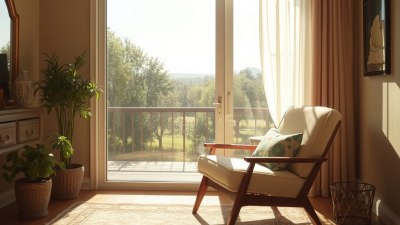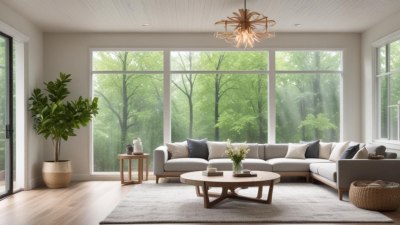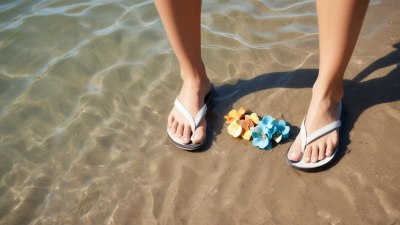Why the Sun Only Hits Your Favorite Chair When You're Not Home
Explore why sunlight seems to favor your favorite chair only when you're away and how home design and sunlight patterns influence it.

Image created with Flux Schnell
It’s a common, almost humorous occurrence: you return home after a day out only to find your favorite chair bathed in warm sunlight—an inviting spot that seemed oddly deserted moments before. You wonder why the sun chooses to shine on that chair exclusively when no one is around. This peculiar dance of sunlight around our homes is not a mere coincidence but is rooted in the architectural design of our living spaces and the natural patterns of sunlight throughout the day and seasons.
The Journey of the Sun Across the Sky
To understand why sunlight hits certain spots in your home when you’re not there, it helps to begin with how the sun moves across the sky. The sun rises in the east and sets in the west, but its position changes subtly with the seasons. During summer, the sun arcs higher, giving longer daylight hours and more direct sunlight, while in winter, the sun’s path is lower and the days are shorter.
This solar trajectory means that sunlight enters your home at different angles depending on the time of day and the season. Your favorite chair’s location—whether near a window facing east, south, or west—plays a crucial role in when and if it gets sunlit.
The Role of Architectural Layout and Window Placement
Homes are designed with window placements, room layouts, and furniture arrangements that inadvertently govern sunlight patterns. A chair placed near a south-facing window, for instance, may receive abundant light for several hours during midday, while an east-facing window bathes a room in gentle morning light. West-facing windows warm the room with late afternoon sun, and north-facing windows receive the least direct sunlight.
If your favorite chair is near a window that catches the sun when you’re typically out—during work hours or errand runs—it explains why that chair is sunlit only when the house feels empty. The sunlight has simply traveled inside, following its natural path, and found that chair as its resting spot.
Why Doesn’t the Sun Hit Your Chair When You’re Sitting There?
It may feel as though the sun avoids your chair when you’re actually using it, but that’s a trick of timing and perspective. Your schedule often reverses the sun’s pattern. For example, if you’re out during sunny mornings and afternoons, the sunlight will strike your chair unoccupied. When you’re home and sitting in the chair, the sun might have shifted to a different position, casting shadows and leaving the chair in cool shade.
It’s also possible that your presence affects the distribution of light. Human bodies absorb and reflect light, and while this effect is minor indoors, it can influence the perception of light warmth. Moreover, curtains, blinds, or even the way you position yourself can alter sunlight’s path.
Seasonal Variations and Their Effects
Throughout the year, the changing seasons affect how sunlight enters your home. In winter, sunlight angles are lower, often allowing light to penetrate farther into rooms, illuminating spots that might be shaded during summer. Your favorite chair might receive sun during certain months when you’re not at home, especially if you maintain a regular work or travel schedule aligned with those seasons.
Conversely, in summer, the higher sun angle may mean that direct sunlight hits the chair only during specific hours when you’re less likely to be there, such as early afternoon or late evening.
The Influence of Surrounding Environment
Trees, buildings, and landscape features around your home cast shadows that alter the sunlight’s reach. A tree might block morning light but allow afternoon sun; a neighboring building might shade windows in the early day but not later hours. These dynamic shadows can explain why sunlight unpredictably strikes your chair only when you’re absent.
Urban environments with tightly packed buildings especially experience these shifting shadows, often shifting the times when sunlit spots appear in interiors.
Experimental Observations: Mapping Sunlight in Your Home
Some homeowners take a scientific approach to this phenomenon by tracking sunlight with simple tools or smartphone apps. By charting the times and locations of sunbeams on the floor or furniture, one can predict when and where sunlight will fall throughout the day and year.
This practice, known as sun path tracking, reveals that your favorite chair’s relationship with sunlight is predictable, based on factors like window orientation, sun angles, and seasonal shifts. The mystery fades, replaced by an understanding of solar rhythm harmonizing with daily life patterns.
How to Enjoy The Sunlit Comfort When You Want
If you wish to capture that warm sunlight on your favorite chair when you’re in it, understanding sun patterns can help you plan your time or rearrange furniture. Moving chairs closer to sun-facing windows or adjusting window treatments can maximize light exposure during occupancy.
Installing adjustable blinds or curtains also allows flexibility to let sun in during favored times and block it when it creates glare or overheating. Reflective surfaces or light-colored walls can help bounce sunlight deeper into the room, extending the warmth and light.
Architectural Design Considerations for Sunlight
Architects and interior designers often consider sunlight when creating living spaces. Passive solar design principles optimize natural lighting and heating by utilizing window size, placement, and shading elements to enhance comfort and energy efficiency.
If your home wasn’t originally designed to harness sunlight effectively, small modifications such as adding skylights or sun tunnels can brighten spaces and provide better sunlit experiences. Landscaping can also be altered to reduce shading or enhance reflected light.
The Psychological Effect of Sunlight on Favorite Spaces
Sunlight has a profound psychological effect on humans. Warm, bright spots in a home naturally attract people, often becoming favorite places for reading, relaxing, or reflecting. The fact that sunlight hits your preferred chair may reinforce your attachment to that spot, even if you find it sunlit mostly when alone.
Recognizing this connection between light and comfort explains why people often move furnishings to soak up sunbeams or why homes are designed to maximize daylight.
The Science Behind Sunlight and Circadian Rhythms
Exposure to natural light regulates the body’s circadian rhythms—our internal clocks that govern sleep-wake cycles and hormone production. Sitting in a sunlit chair during the day can boost mood, energy, and well-being. When the sun appears to hit your favorite chair only in your absence, you might be missing these subtle health benefits.
Adjusting your schedule to enjoy these sunlit moments can support better health and vitality, emphasizing the importance of natural light in daily routines.
Other Factors: Weather, Window Glass, and Obstructions
Weather conditions impact sunlight availability as well. Cloud cover reduces direct sunlight, while clear sunny days enhance it. The type and cleanliness of windows also play a role; tinted or dirty glass reduces light penetration, changing where and how sunlight reaches the interior.
Furniture placement beyond just that chair, such as nearby shelves or plants, can cast shadows or redirect light beams, affecting which spots get sun. Even small changes in the environment around the chair might cause the sun to avoid or embrace it on different days.
Embracing the Welcome Surprise of Sunlit Spaces
While it might be frustrating that your favorite chair is only warmed by the sun in your absence, it’s also a reminder of nature’s rhythms interacting with our lives. These moments where sunlight finds hidden niches provide a comforting ambiance that’s part of living spaces’ unique character.
Appreciating this natural choreography encourages mindfulness of daily light cycles, inspiring changes that let you enjoy sunlit serenity more consistently.
In essence, the reason the sun hits your favorite chair mainly when you’re not home boils down to multiple factors: the sun’s path, window direction, furniture placement, seasonal shifts, local shadows, human presence, and architectural design. These elements combine to create a pattern that makes sunlight’s visit to your chair a scheduled yet seemingly elusive event.
Understanding these mechanics empowers you to arrange your space and habits for greater comfort and sunlight enjoyment, turning mystery into mastery.











